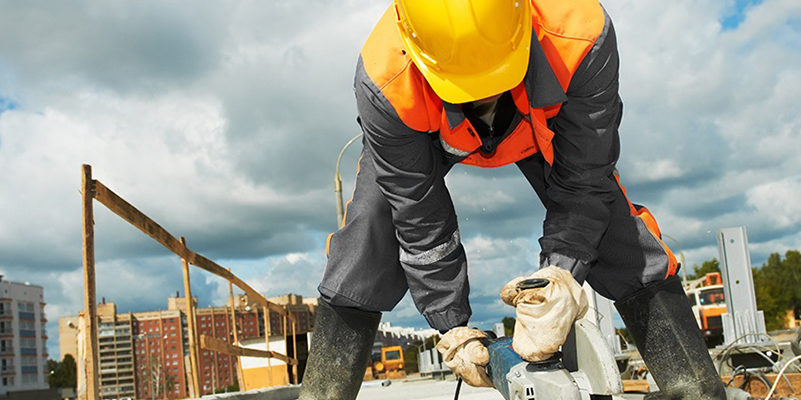The construction world we live and work in is comprised of fathers, mothers, brothers, sisters, sons and daughters. Those involved in the industry must focus on and prioritize safety to do their best to ensure everyone returns to their family and loved ones at the end of each day.
A construction worksite is an inherently complex and hazardous environment with heavy machinery and equipment, power tools, evolving structures and a changing workforce. While we believe that every construction company—and every employee—wants to return home safely and in the same condition as when they arrived, unfortunately, safety can sometimes take a supporting role to keeping projects on schedule and on budget. A 2017 National Safety Council survey of 2,000 workers, for example, found that more than one-third (36%) strongly or somewhat agreed that “safety takes a backseat” to completing job tasks. In extreme cases, accidents or workers’ compensation costs may be viewed as a given “cost of doing business,” and safety is a focus unless—or until—production is affected.
We at Triax believe that safety must be integral to every construction site design, plan, process and action. A safe jobsite is a more productive jobsite, and when workers return home to their families safely each day, everyone wins. With June in full swing, and in honor of the NSC’s annual National Safety Month campaign, there’s no time like the present to discuss safety #BestPractices and reaffirm your organization’s commitment to keeping each other safe.
It Starts at the Top
Experience can prove a significant factor when it comes to establishing a comprehensive and engaged safety culture and finding safety practices and messages that resonate with workers. But accidents do happen to even the most experienced. In early June, a New York city surveyor in his sixties was killed when the platform he was standing on collapsed.
On one hand, there’s no substitute for experience, and seasoned workers know what to be on the lookout for. On the other hand, experience can instill a false sense of security or confidence that leads workers to cut corners, skip steps or resist new safety measures and tools that are being adopted.
It can be difficult to convince someone that his or her behavior is unsafe if he or she has been doing it that way for years and without incident. Still, one incident is all it takes, and no one is immune to the mistakes or complacency that can result in accidents or potential injuries.
Partner in Safety
In most cases, if an individual really wants to do something, he or she will do it whether someone else is watching or not. By that same measure, if a worker only engages in a safe practice or behavior because it’s a regulation or rule, he or she will do it only when they think they’re being watched or think someone will find out. The mentality of trying to force safety upon your workforce or to “catch” workers in the middle of an unsafe act doesn’t lead to a sustained, inclusive, successful safety culture. What’s more, it’s practically impossible to have people walking the site at all times to ensure workers are following correct safety procedures.
A genuine, long-term approach must focus on collaboration over consequences. Instead of being the safety police, be the safety partner. Stay informed of recent safety-related news and developments, engage workers in a conversation, and find common goals or reasons to stay safe. Make it personal; everyone has a reason for going to work each day and returning home safely at night. By protecting yourself, you’re protecting your family. Safety results from what management says, what workers see on the job, and the tools each individual is equipped with to take ownership over site safety and report or stop a potentially hazardous condition. Instead of attributing safety incidents to the vague problem of the site’s safety culture itself, rethink the values and practices that guide management’s efforts.
Safety Pays
Organizations with a short-term focus on promoting safety to achieve operational or financial goals fail to see how a strong safety culture helps their businesses from a competitive standpoint in the long-term. Organizations that commit to safety wholeheartedly and with discipline, even when it’s unpopular or difficult, will always come out on top. Investing in tools that facilitate real-time incident reporting and two-way communication send a message to workers that they are valued, and that if they voice their concerns, they will be heard.
In the end, it is ultimately about taking a proactive versus reactive approach to safety. Look for ways to learn about potential injuries or accidents as they occur, so that you can respond more quickly. Developing and adopting workplace best practices to create a safer environment leads to a more resilient workforce and a healthier bottom line.

